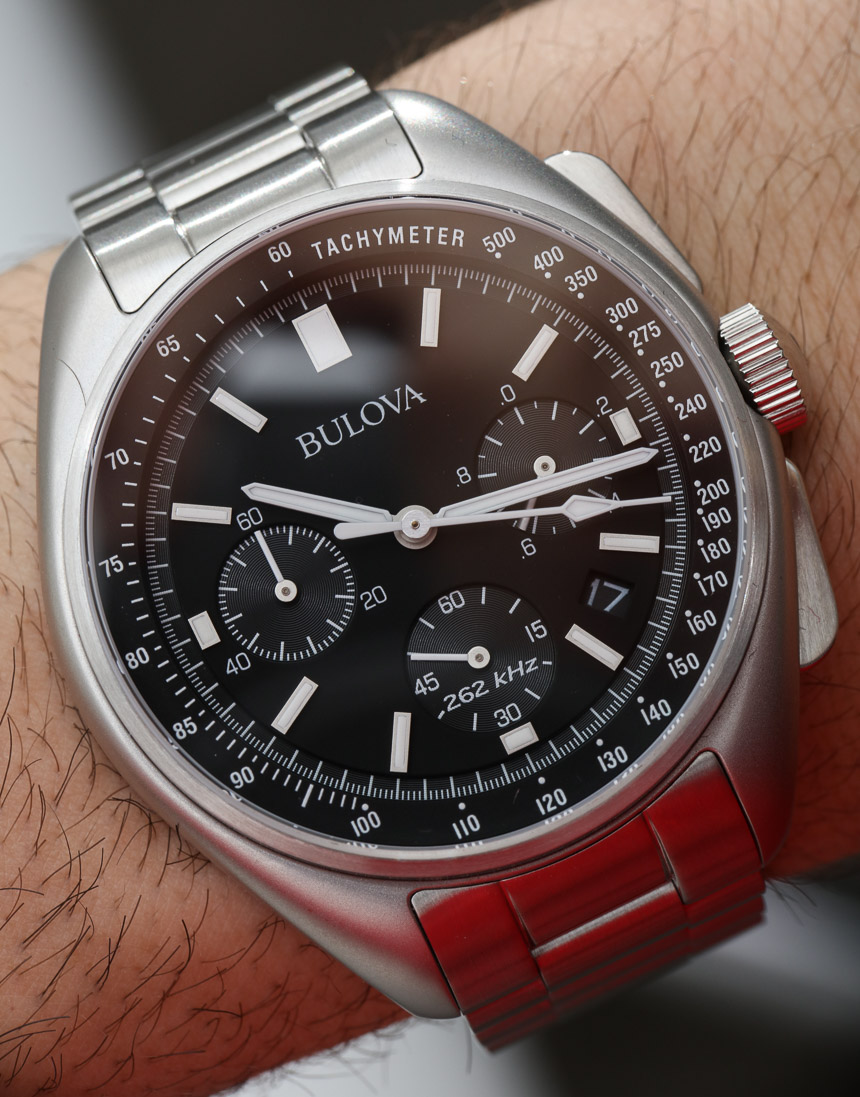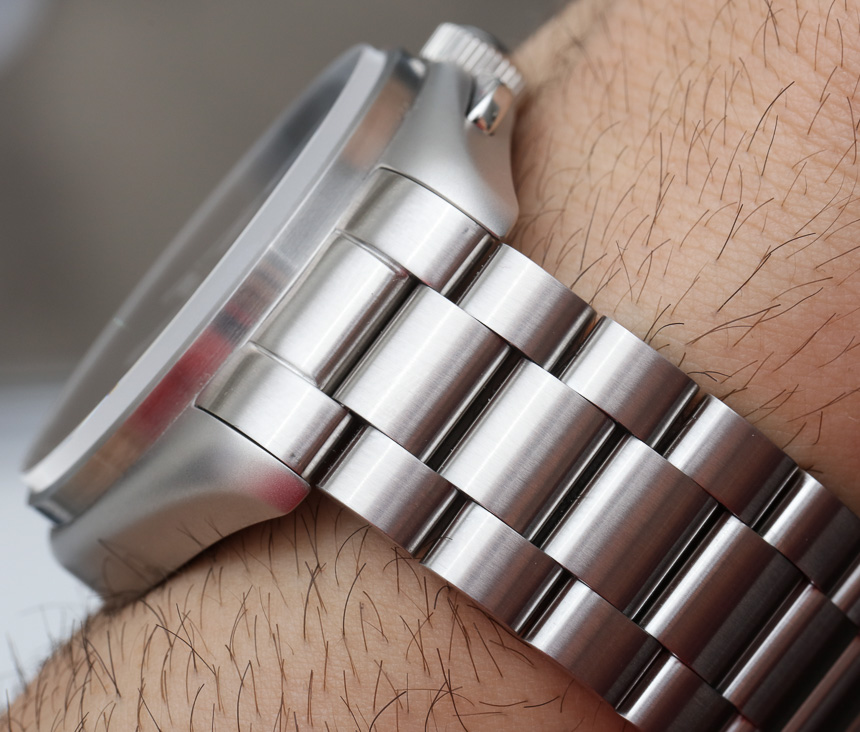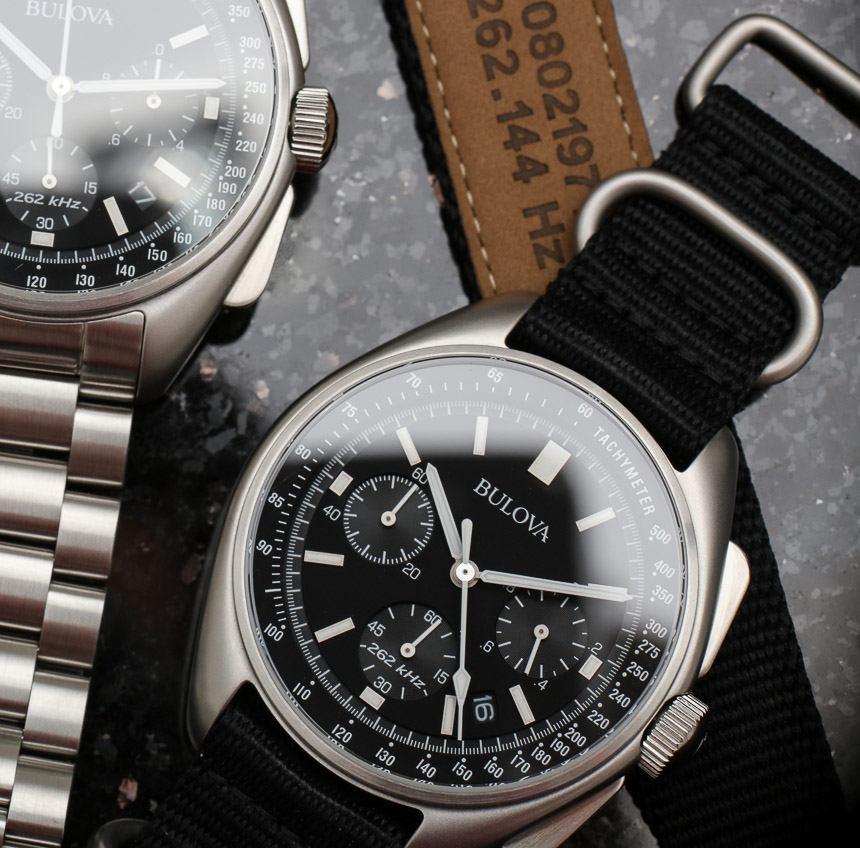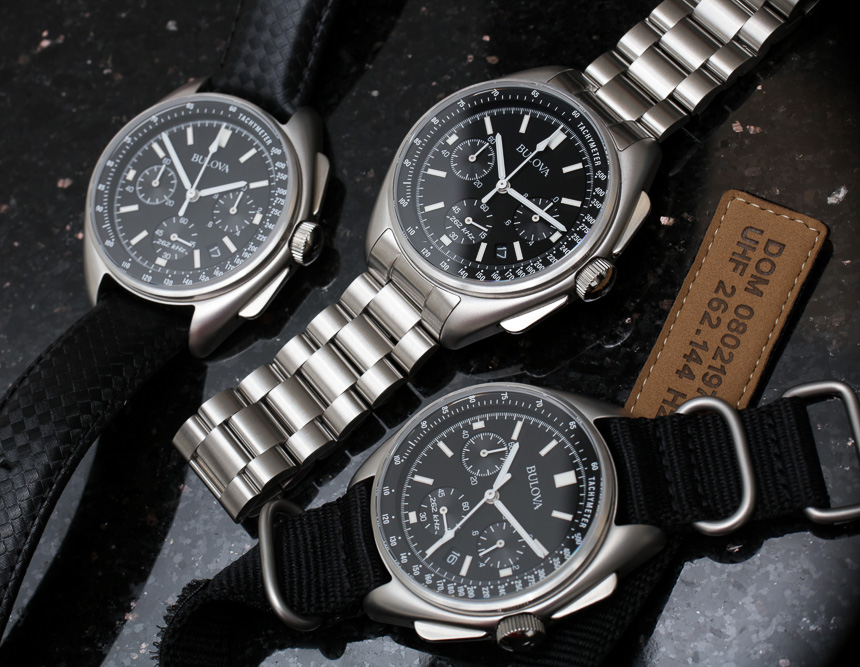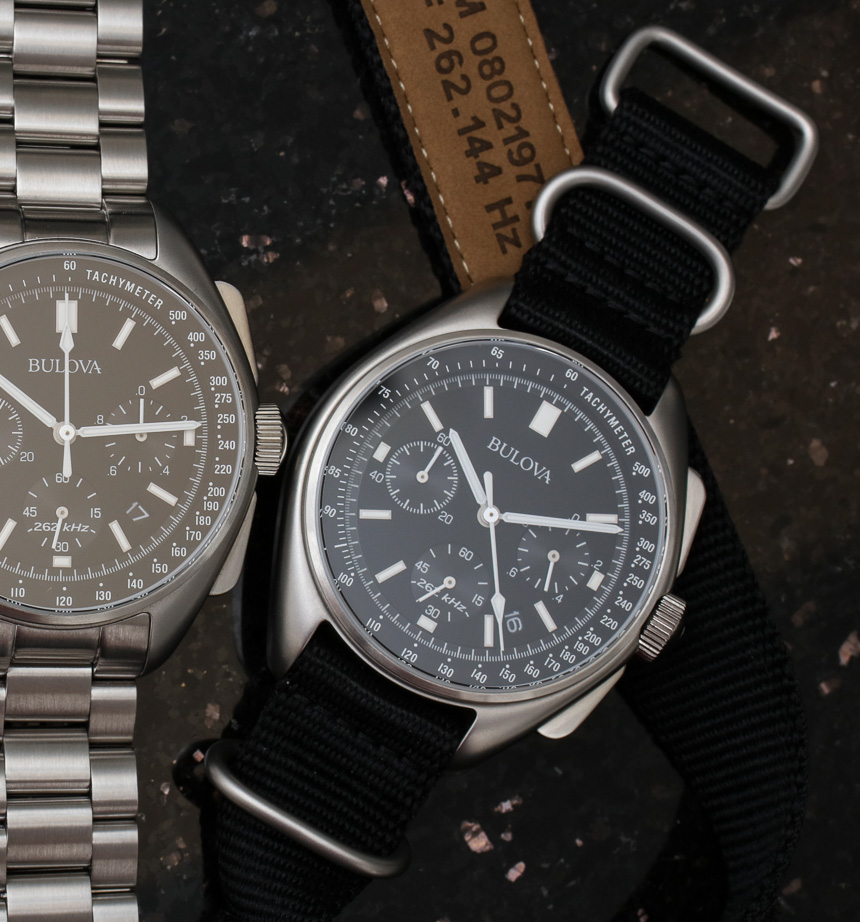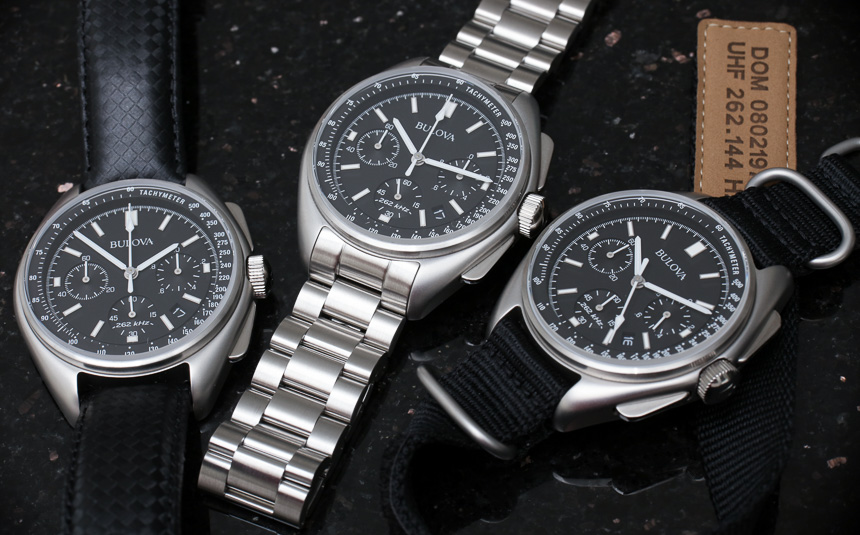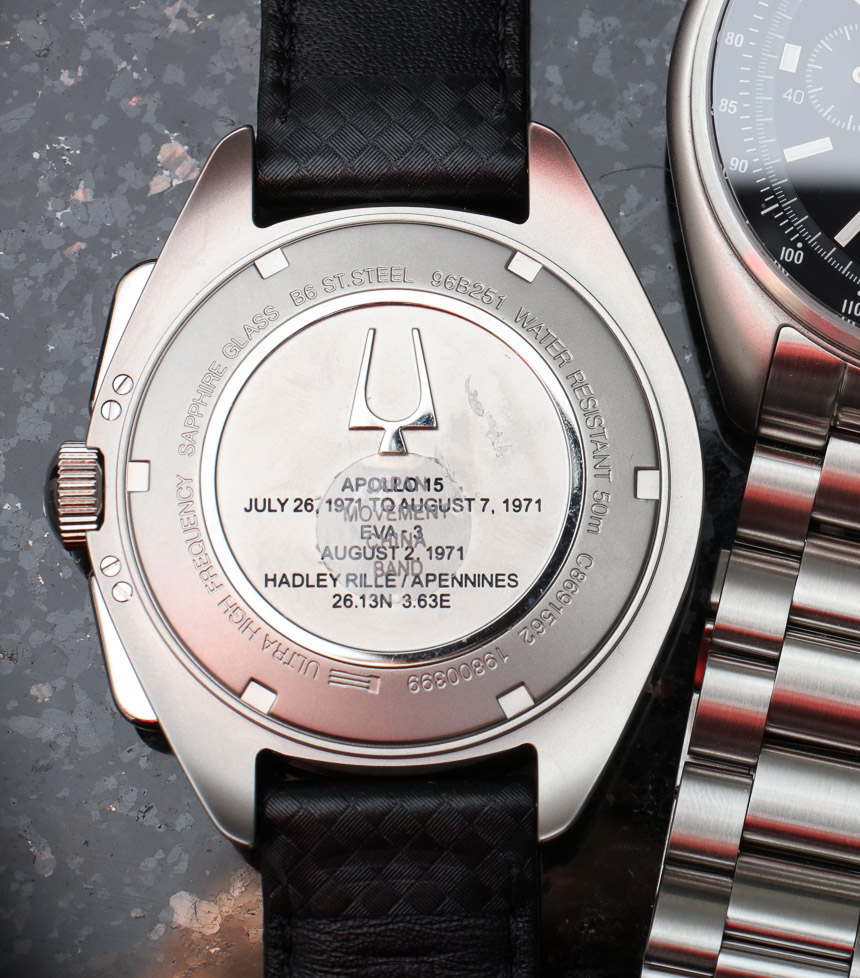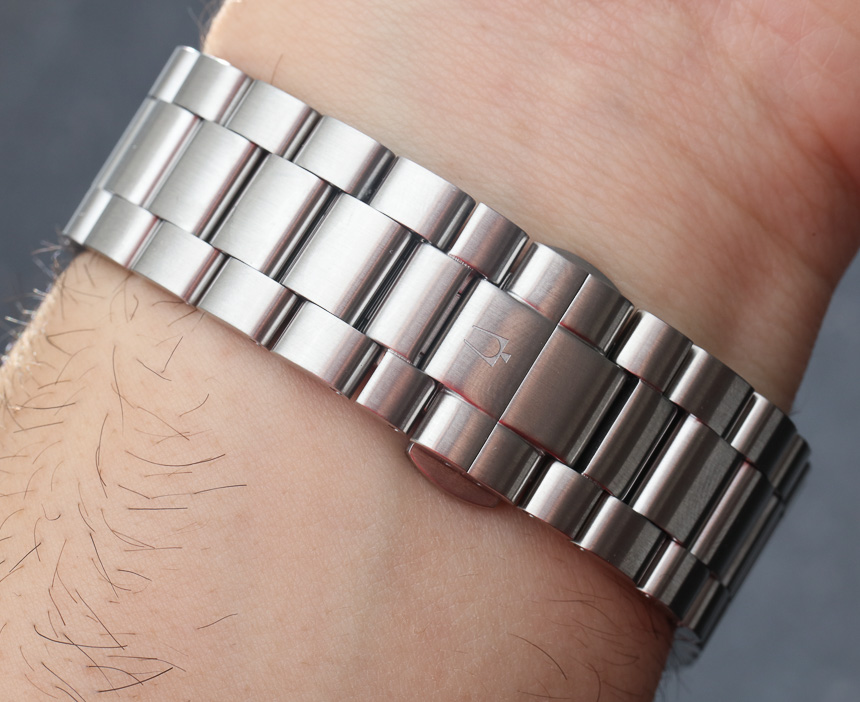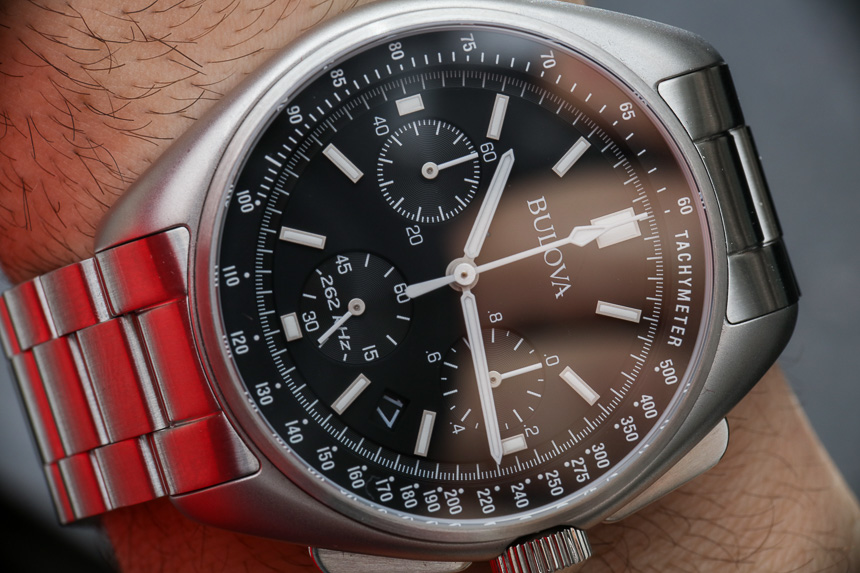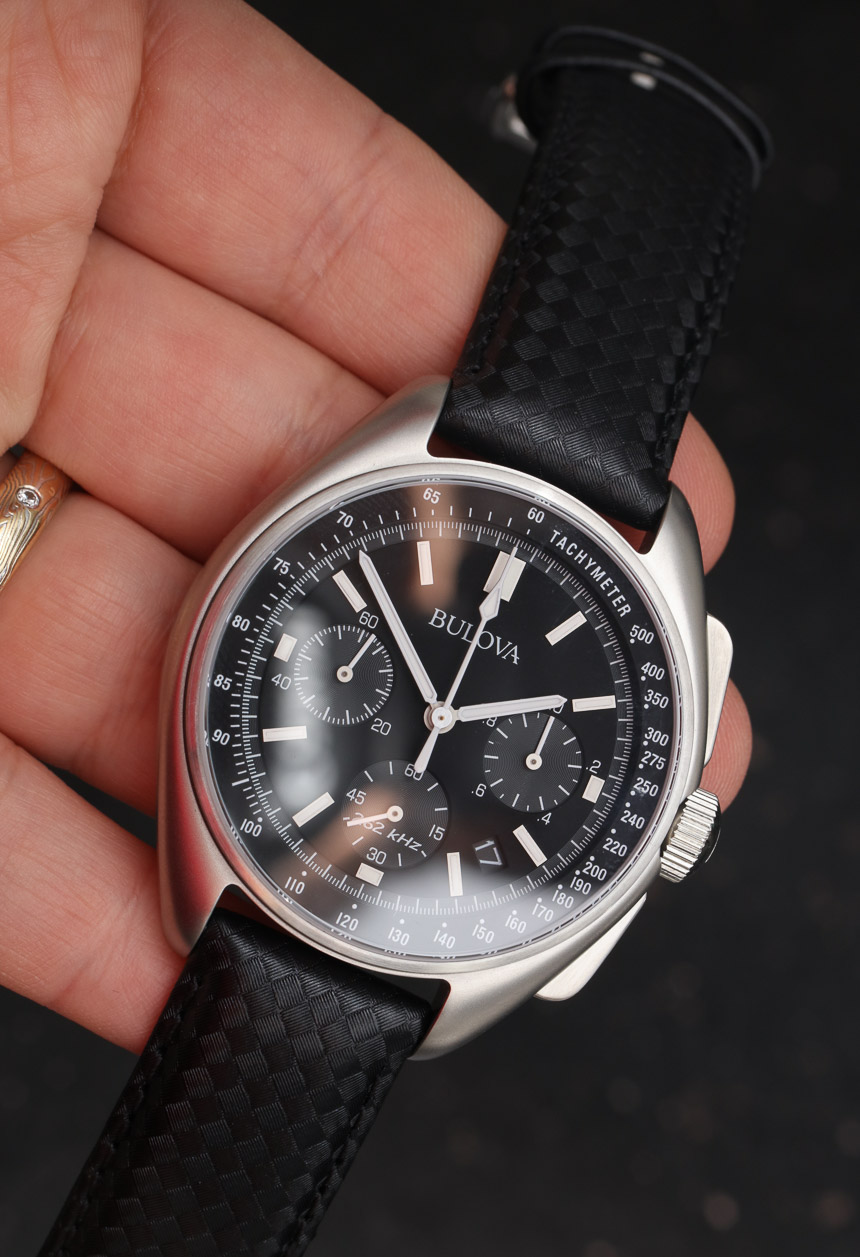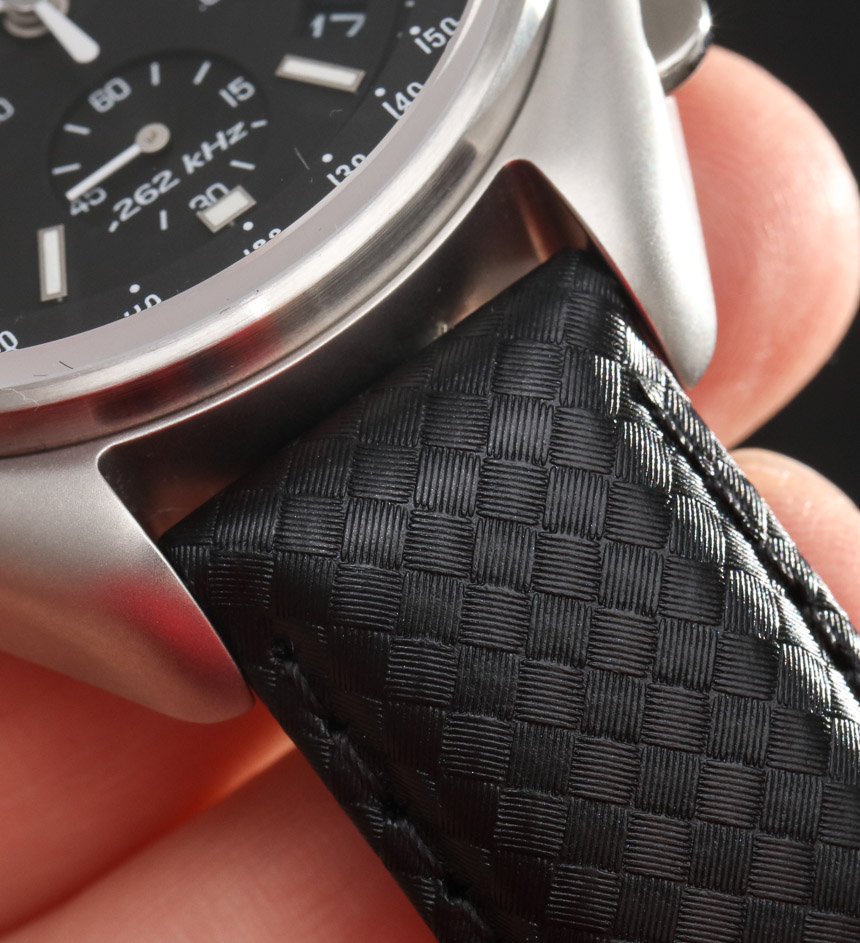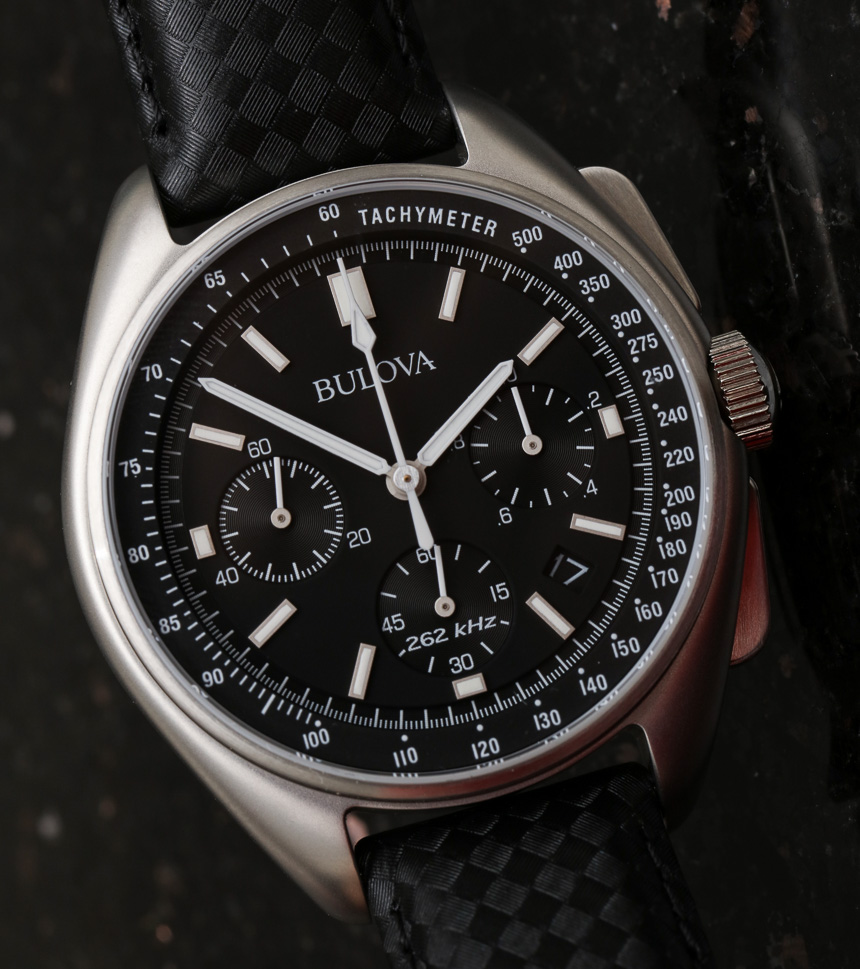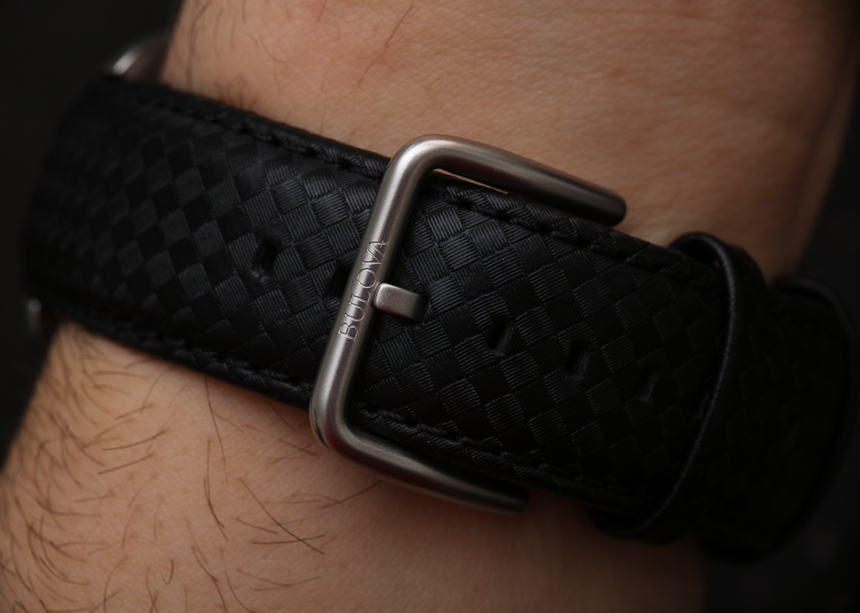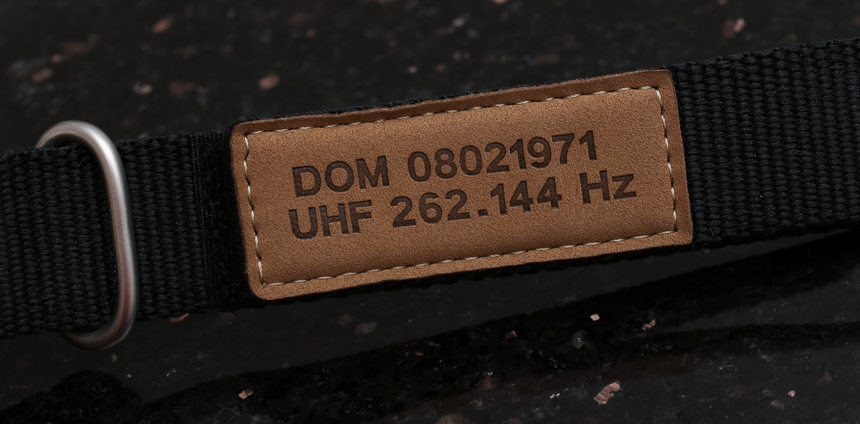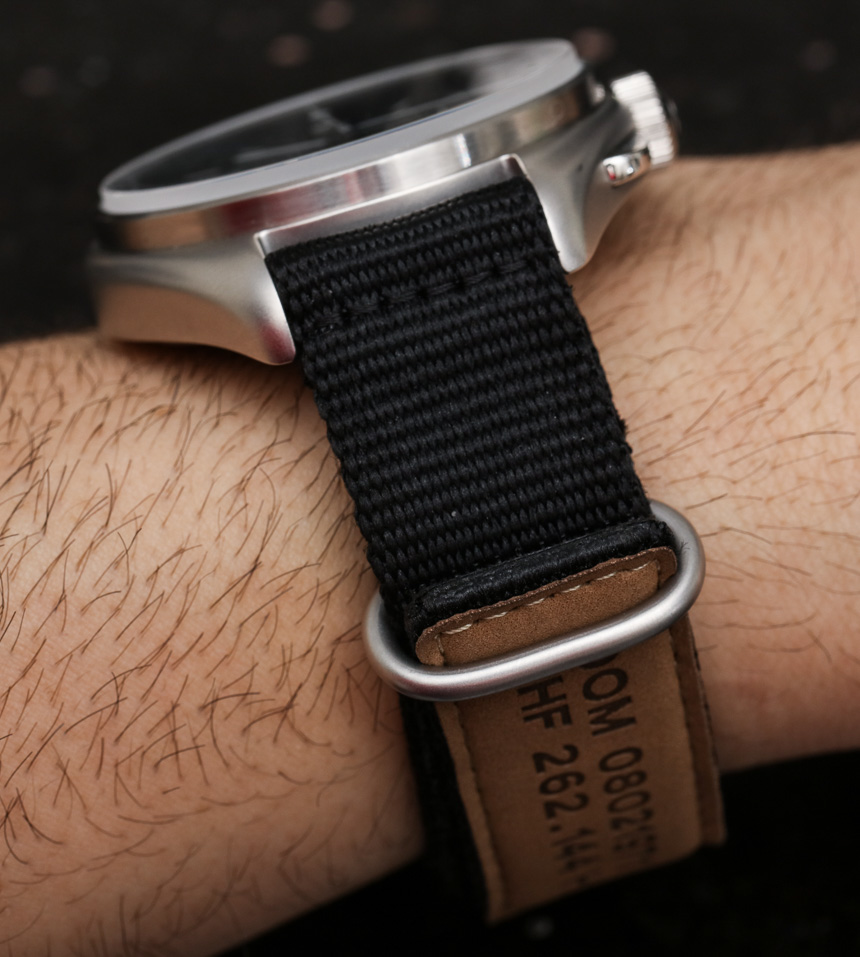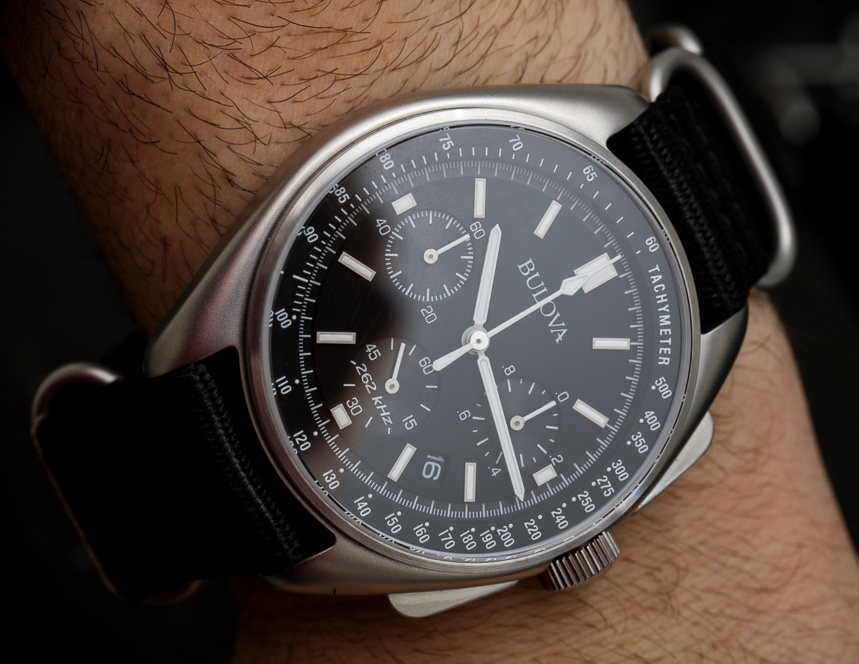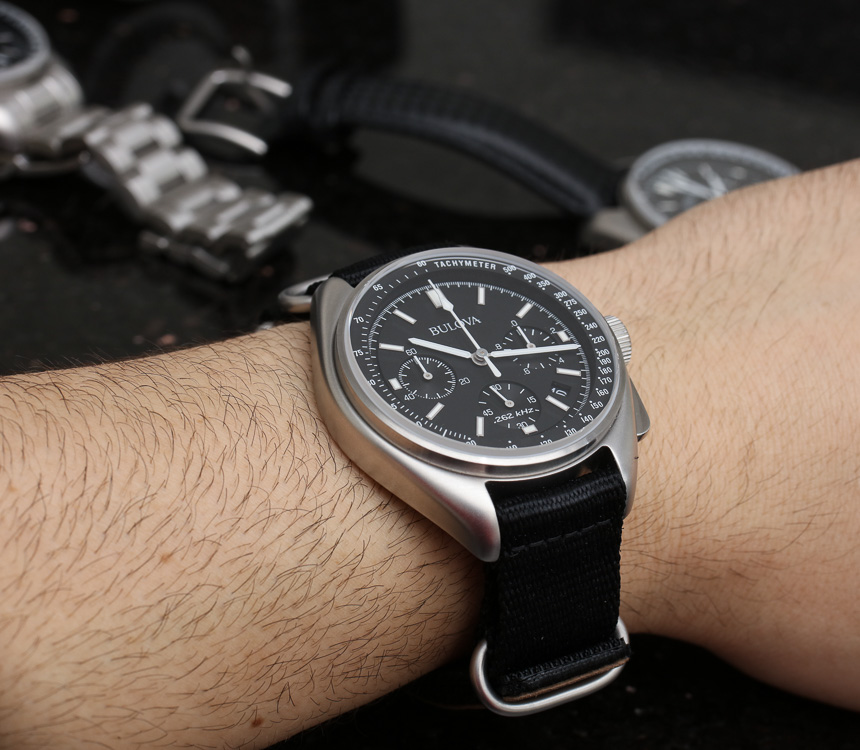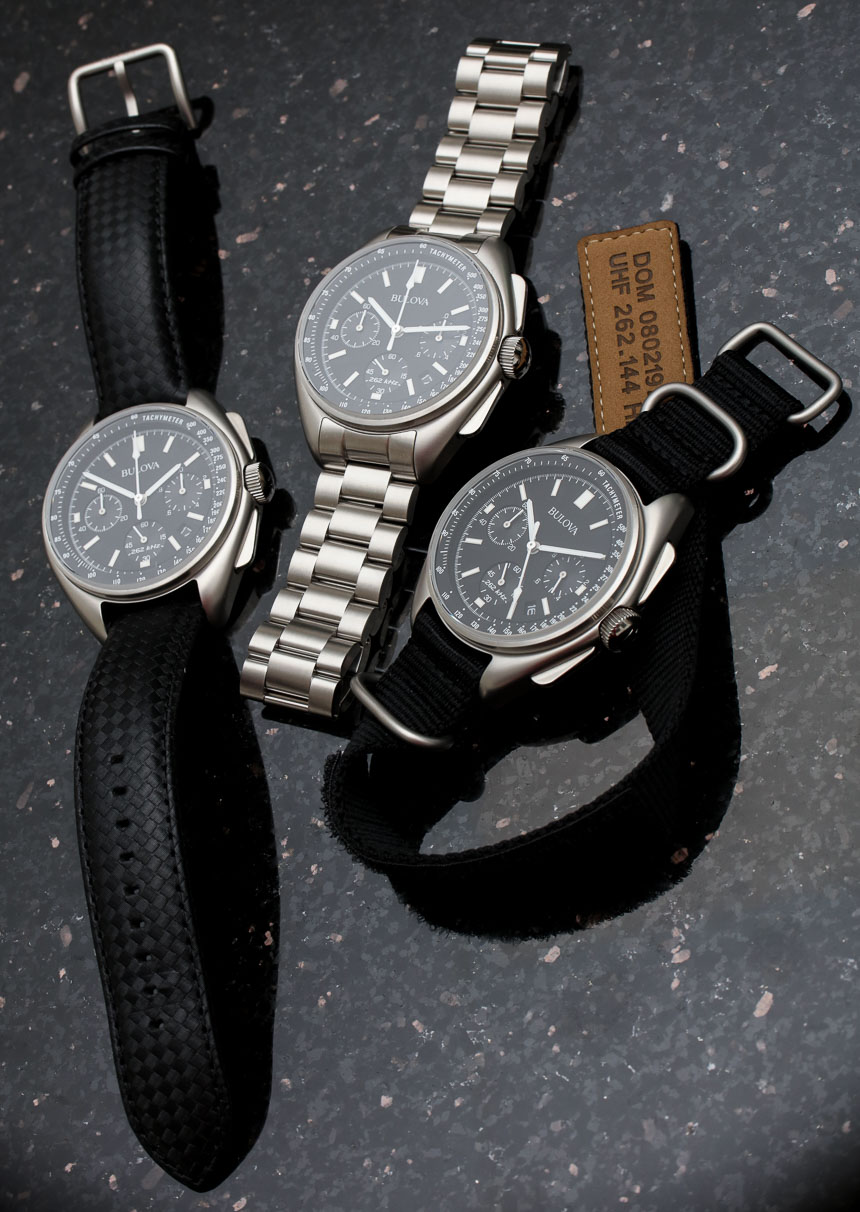
I love it when watch enthusiasts on a budget have excellent options produced with their needs in mind. The Bulova Moon Watch is an Omega Speedmaster for millennials or anyone who wants a cool historic-looking tool watch but can’t afford several thousand dollars for a serious mechanical timepiece. Better yet, the Bulova Moon Watch isn’t just trying to be a fashion statement inspired by watches that went to the moon, it is, in fact, directly inspired by an actual Bulova watch that did go to the moon.
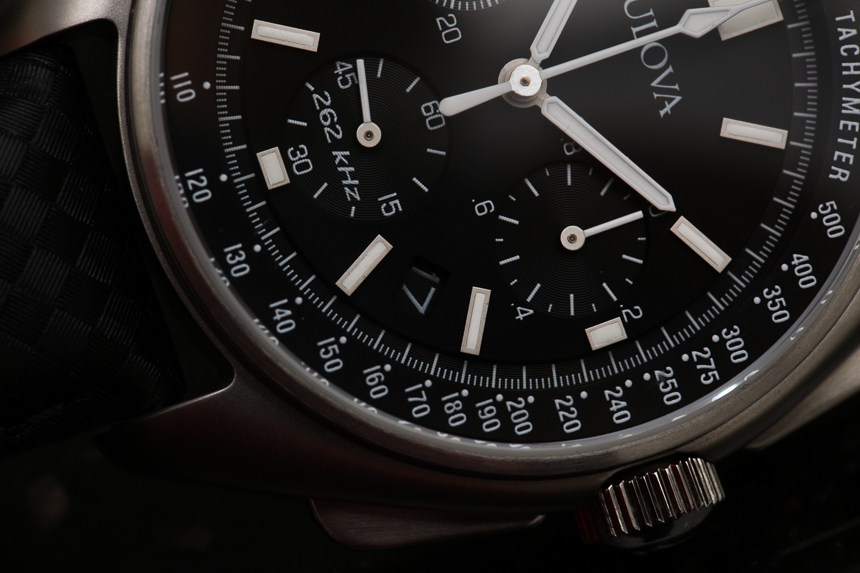
News of the Bulova Moon Watch came to me late in 2015, but I wanted to wait and see the timepiece hands-on before making any conclusions about this good-looking monochromatic tool-style timepiece. In fact, if the Bulova Moon Watch were made today as a novel model, it would serve equally well as a tool-timepiece for those who needed a high-legibility, high-accuracy instrument.
The story of the Bulova Moon Watch began with a specially designed one-of-a-kind Bulova gifted to NASA Apollo Mission astronaut Dave Scott in the late 1960s or early 1970s. Dave Scott took the unique Bulova watch gifted to him by the brand with him on the 1971 Apollo 15 mission to the Moon. At the time, astronauts had government-issued Omega Speedmaster watches. The mere fact that astronauts had Omega Speedmaster watches was not without controversy, as Omega was a Swiss watch brand and certain people in the US believed that the astronauts should be wearing an American watch (at the time, Bulova was a fully American company).
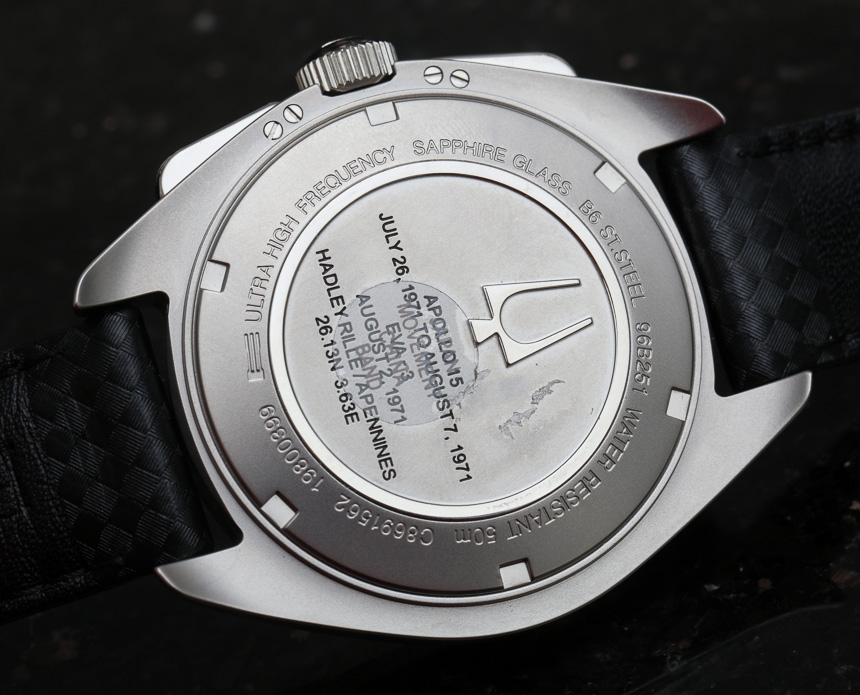
As the story goes, Dave Scott’s Speedmaster became damaged and the front crystal popped off, which necessitated he wear his back-up Bulova. Colonel Scott went on to walk on the Moon’s surface and was the first person to operate a lunar rover vehicle. One his wrist at the time was reportedly the Bulova watch. After the Apollo 15 mission, the Bulova watch – as it was Scott’s personal property – remained his personal possession for many years. In 2015, Scott himself decided to auction off the Bulova watch, along with a few other items he had on the Apollo 15 mission with him. The price achieved for Dave Scott’s “Bulova moon watch” was a staggering $1,625,000 in late 2015.
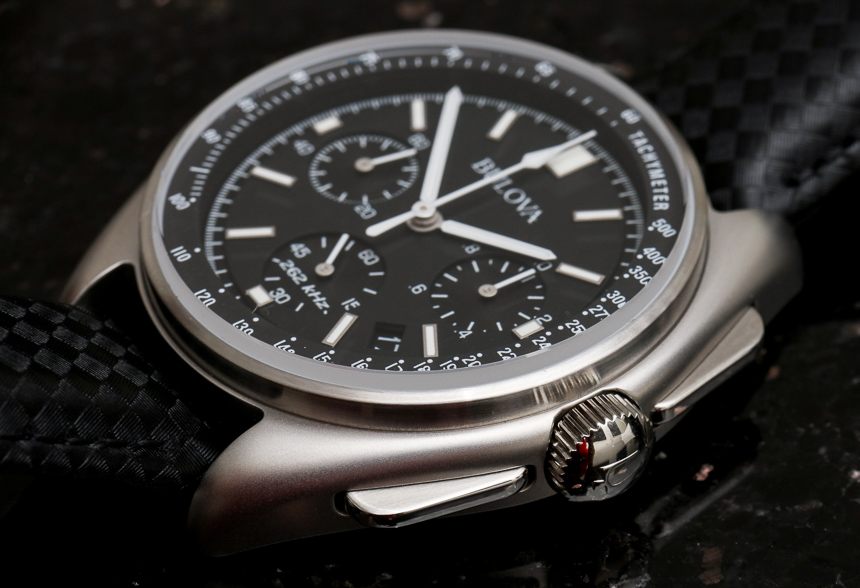
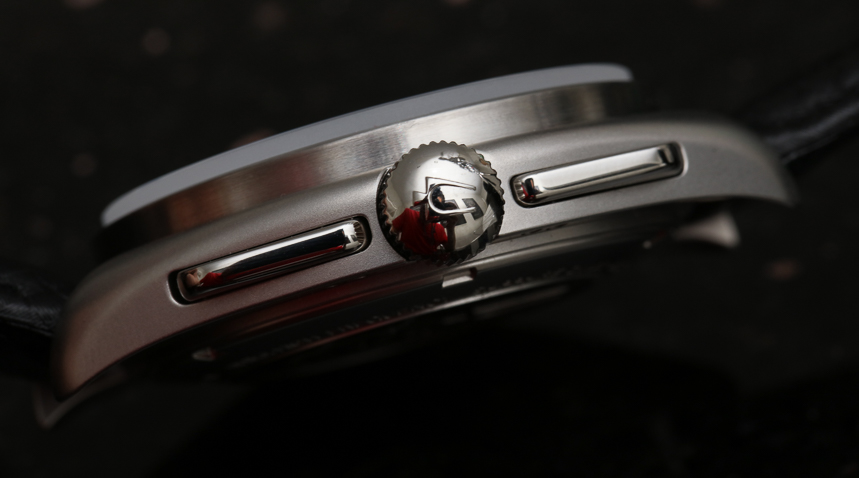
Bulova then took the opportunity to recreate this timepiece as a production model for modern audiences. Larger than the original and using a high-precision quartz movement, the Bulova Moon Watch of 2016 isn’t really a “re-issue” of the late-1960s watch as has been reported, but rather a modern timepiece inspired by the classic design. In a roughly 44mm-wide steel case, the Bulova Moon Watch is very attractive in person with a gracefully curved case and distinctive, easy-to-operate chronograph pushers. If the Bulova Moon Watch looks a lot like a Speedmaster, then all you need to do is look at the original and realize that Bulova was really just building the original watch off the specs NASA had indicated for watches meant to travel in space with astronauts.
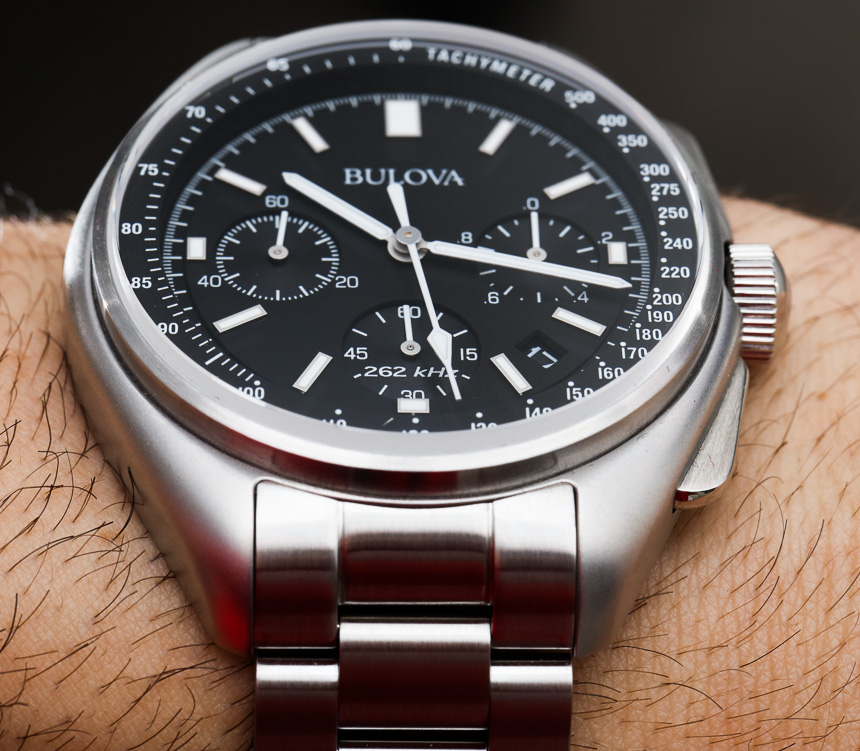
The 2016 Bulova Moon Watch is a faithful recreation of the style of the original, but in modern materials. The watch also has an AR-coated sapphire crystal and a case that is water resistant to 50 meters (though 100 meters of water resistance would have been nice). The watch also wears a bit smaller than you’d expect given the size and wide lug structure. What I really like is the totally monochromatic dial which is rare to find on watches today at this price point. Most watches of this type, in this price range, try to offer a lot of funky modern design elements for an audience that brands feel value style over substance much of the time. Brand’s often assume that buyer tastes will mature as their income increases. Finally, with the Bulova Moon Watch, tool watch-loving enthusiasts with just a few hundred dollars to spend have something very appealing to get.
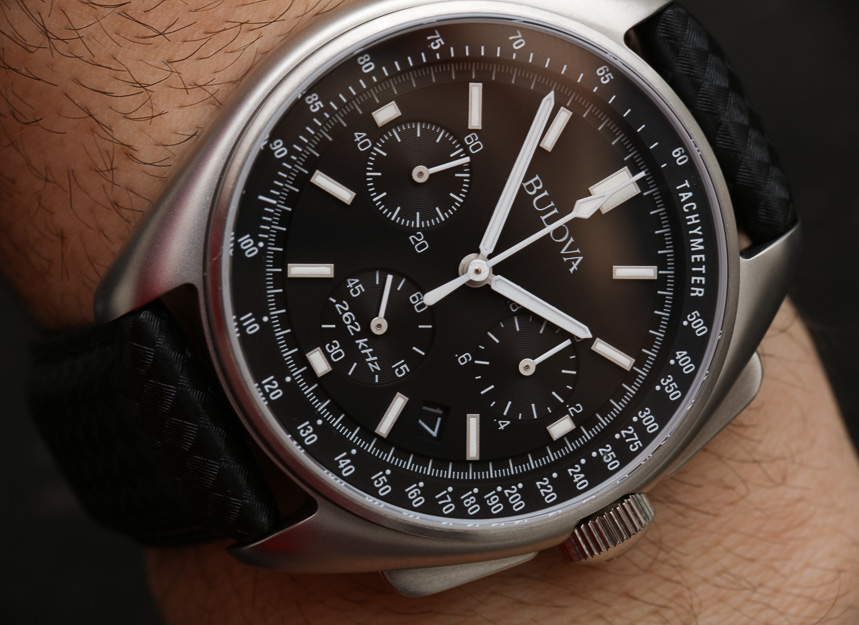
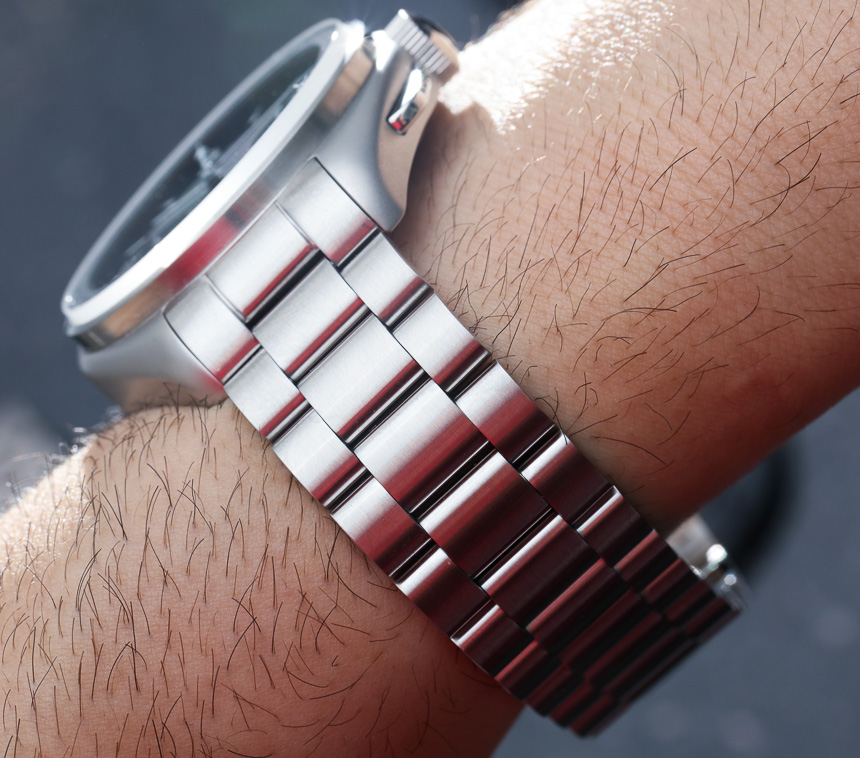
Inside the Bulova Moon Watch is the proprietary Bulova “High-Performance” 262 kHz quartz chronograph movement. This family of movements was previously known as “UHF” (ultra-high frequency), and has since been renamed, according to Bulova (with that said, “UHF” and “Ultra-High Frequency” terms are on the watch in at least two places). Originally, these movements debuted in the very well-regarded Bulova Precisionist collection (review here).
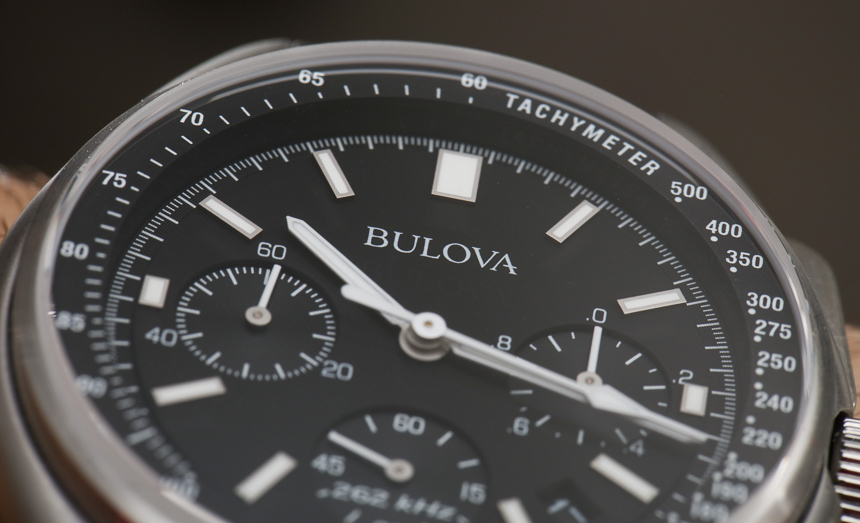
What makes these movements special compared to most other quartz movements is that they are several times more accurate, deviating by no more than about 10 seconds or so per year (as opposed to 10-15 seconds per month). The movements have a battery life of about 2 years and the chronograph (which has a nice sweeping hand) measures down to 1/10th of a second. The watch offers the time, date, and of course chronograph complication. In person and on the wrist, the Bulova Moon Watch watch looks great, offering the look of a traditional tool watch with a very reasonable price and excellent performance.
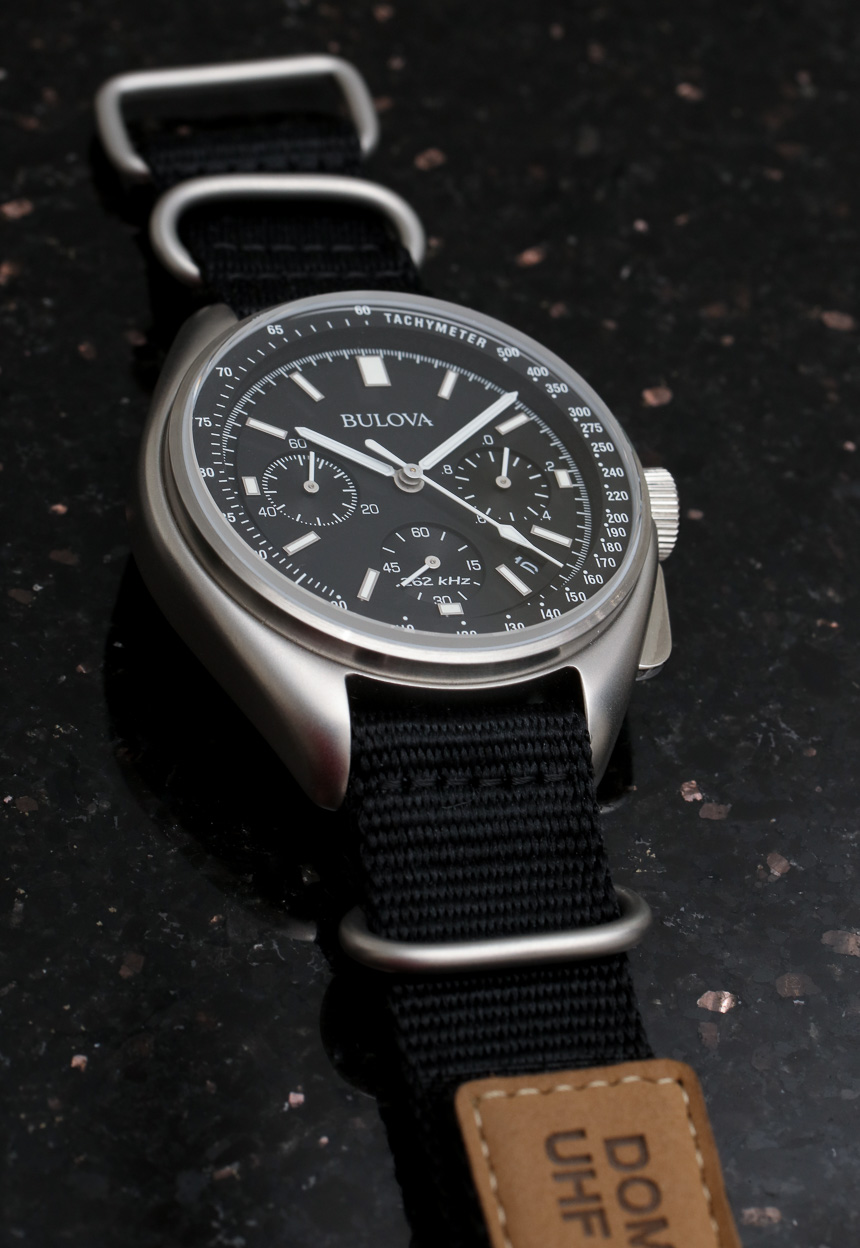
Bulova will offer two versions of the Bulova Moon Watch. One version comes in a handsome steel three-link metal bracelet that looks excellent. The second is with a textured (to look like fabric weave) leather strap. This strap version also comes with a velcro-style “hook and loop” black fabric strap with thick metal hardware and a brown leather patch which has the 262 kHz speed of the quartz movement along with the original Apollo 15 mission date. I’m really quite happy that the Bulova Moon Watch came out so well, and hope to see more sober-looking and timeless modern tool watches such as this come from the brand (the cool backstory doesn’t hurt either). Prices for the Bulova Moon Watch are $550 on the strap and $675 on the steel bracelet. bulova.com

